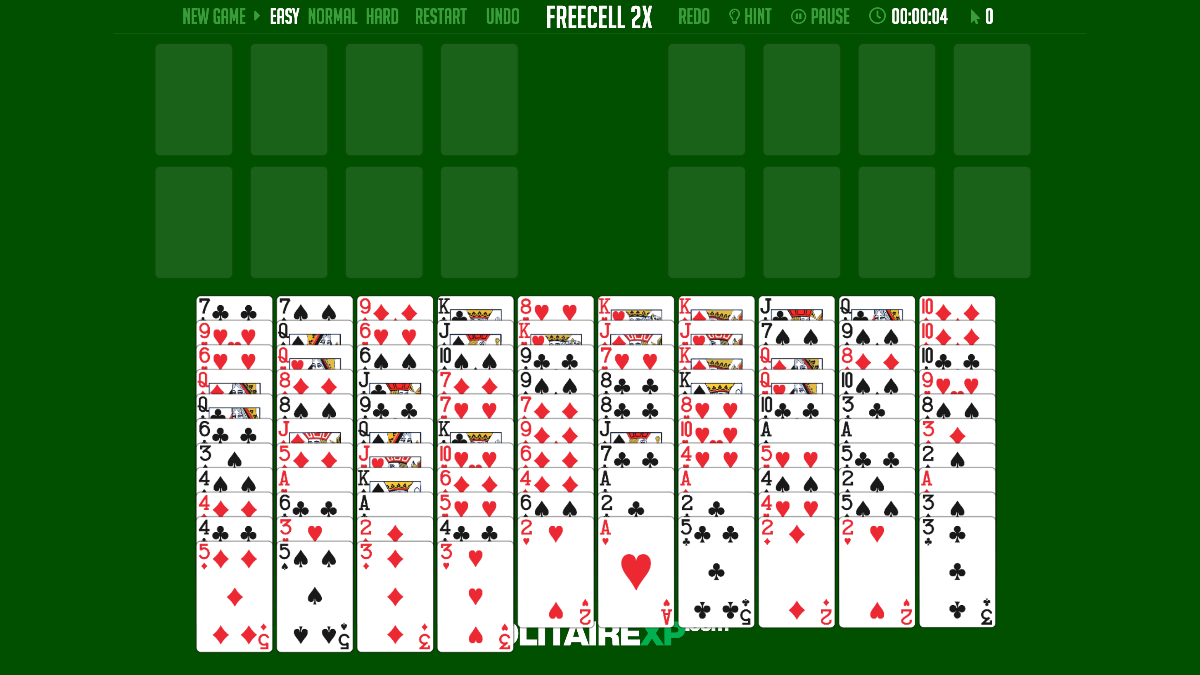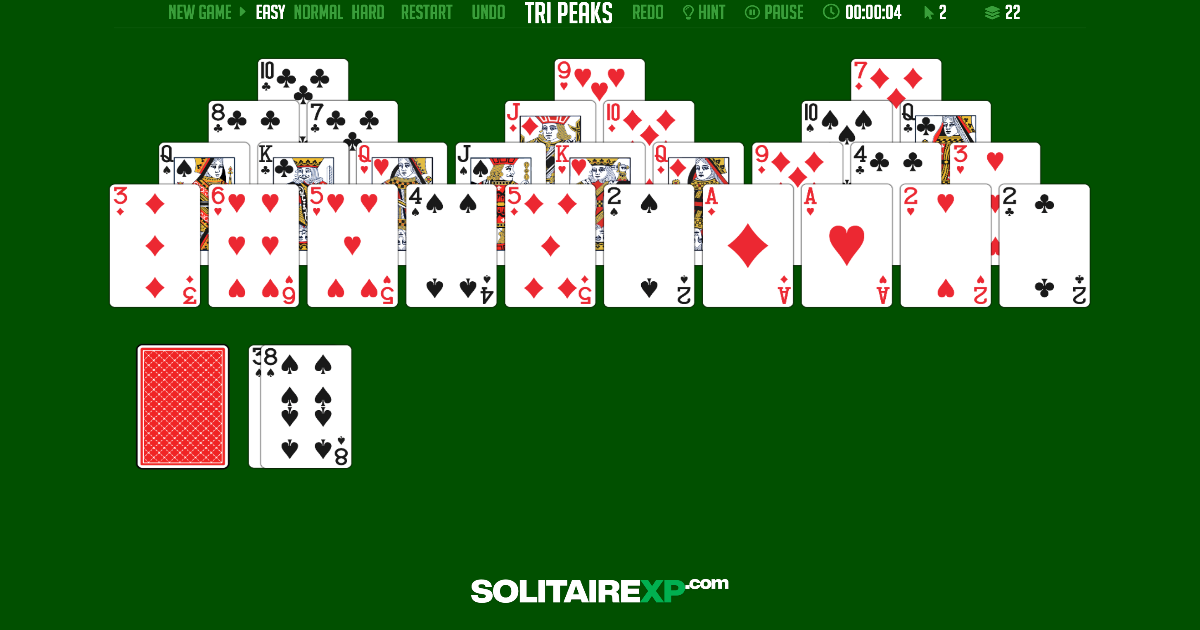What is Double Freecell?
Double Freecell is an exhilarating two-deck variant of the classic FreeCell solitaire game, doubling the cards to 104 for a more demanding strategic challenge while preserving the core mechanics of free cells and tableau building.
Loved by card-game enthusiasts for its near-perfect solvability with skillful play, Double Freecell amps up the puzzle-solving intensity of FreeCell, making it ideal for veterans seeking longer sessions and deeper planning.
Invented by renowned solitaire designer Thomas Warfield in 1996 as part of his Pretty Good Solitaire collection, it quickly gained popularity among digital players. For more on FreeCell’s history (from which Double Freecell evolved), see the Wikipedia entry.
Whether you’re mastering sequences or uncovering hidden moves, Double Freecell delivers timeless solitaire satisfaction.
How to Play Double Freecell – Rules Explained
Hey there, card game enthusiast! 🃏 If you’re a fan of classic Freecell but craving a bigger challenge, Double Freecell is your next adventure. This solitaire variant uses two decks, making it twice the fun (and twice the strategy). Don’t worry—we’ll break it down step by step so even beginners can jump right in. Let’s shuffle up and deal!
Setting Up the Game
Grab two standard decks of 52 cards each, shuffle them together to make a 104-card mega-deck. 🔀 Deal the cards face-up into ten columns, called the tableau:
- The first four columns get 11 cards each.
- The next six columns get 10 cards each.
Above the tableau, you’ll have eight free cells (empty spots to hold single cards temporarily) and eight foundation piles (where you’ll build your winning sequences). Everything’s visible from the start—no hidden surprises! 😊
The Objective of the Game
Your goal is simple: move all the cards to the eight foundation piles. Each foundation is built by suit (hearts ❤️, diamonds ♦️, clubs ♣️, spades ♠️) from Ace to King. Get all 104 cards sorted, and you win! 🏆
Understanding the Basics
- Deck: Two standard decks (104 cards).
- The Tableau: This is your main playing area with the ten columns. You can build down in alternating colors—like a black 7 on a red 8. Only the top card of each column is free to move at first.
- Free Cells: These eight handy spots act like temporary storage. Each can hold one card. Use them to shuffle things around when you’re stuck. Think of them as your “parking spots” for cards. 🚗
- Foundations: The endgame zones! Start with Aces and build up in the same suit.
How to Move Cards
Moving is straightforward: you can shift single cards between tableau columns, to free cells, or to foundations. Want to move a sequence? You can, but only if you have enough empty free cells or empty columns to “help” the move. For example:
- One empty free cell lets you move a sequence of two cards.
- Two empties allow three cards, and so on.
Empty columns count as extra free spaces too! Just remember, tableau builds must alternate colors and descend in rank. Pro tip: Always plan a few moves ahead to avoid getting jammed. 🤔
Tips and Strategies to Win Double Freecell
Focus on Empty Columns
Empty tableau columns are the most valuable resource. Create at least one empty column early to increase mobility for rearranging long sequences.
Manage Your Free Cells Wisely
Avoid filling all free cells. Keep one or two free cells available to temporarily hold cards needed to unblock sequences. Free cells act as short-term storage and give you flexibility.
Think Several Moves Ahead
Because of the double-deck complexity, anticipate the consequences of each move. Consider how moving one card will affect access to other cards.
Build Foundations Evenly
Try to advance multiple foundation piles rather than finishing one suit too early. Balanced foundation building prevents blocking tableau progress.
Use Temporary Sequences
Use free cells and empty columns to create temporary sequences that allow you to expose buried cards and free important Aces or low cards for foundation building.
Double Freecell Variations and History
Double Freecell likely originated as a community-driven variant for players seeking a longer and more strategic challenge than classic Freecell.
Variations may change the number of tableau columns, the number of free cells, or the exact layout to adjust difficulty.
Common Questions (FAQs) about Double Freecell
Q: How is Double Freecell different from classic Freecell?
A: Double Freecell uses two decks (104 cards) and typically more tableau columns and foundations, creating significantly more complexity than classic Freecell.
Q: Is Double Freecell solvable every time?
A: Many deals are solvable, but because of increased complexity some layouts may be unsolvable or require near-perfect play. Skillful planning increases your success rate.
Q: Can I play Double Freecell online for free?
A: Yes. You can play free online implementations on our site. Click here to start the game now without any download!
Q: What are the best beginner strategies?
A: Beginners should focus on freeing columns quickly, keeping at least one free cell available, and moving low-ranked cards to foundations when safe to do so.




Comments (0)